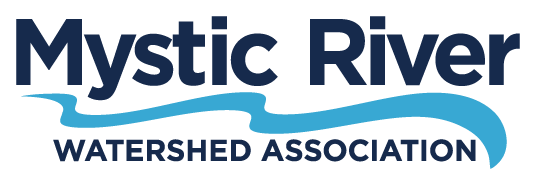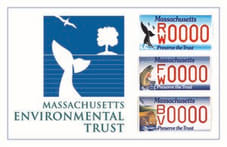Trash-free mystic
Trash-Free Mystic is an initiative to reduce short-term and long-term impacts of trash in our rivers through public education, stewardship, data collection and collaboration
Why Should We Care About Trash?
Trash is one of the most visually apparent forms of pollution in our environment. Littered streets, parks, and waterways not only detract from the beauty of our communities but can also lead to serious environmental issues.
Trash accumulated at the Malden River Trash Trap. Credit: Rich Whelan
Trash — especially plastic — harms the environment
Plastic bags, water bottles, straws, and food packaging are all designed for one-time use, making them convenient. However, when discarded in the environment, single-use plastics break down into smaller particles known as microplastics. Microplastics attract other pollutants in water and concentrate harmful chemicals in food webs in the ocean. Microplastics from tire-wear particles have been shown to reduce salmon populations in the Pacific Northwest.
MOST PLASTIC IN THE OCEAN COMES FROM RIVERS
Most trash in oceans comes from rivers. So worldwide, the huge environmental problem of plastic in the ocean has its roots in plastic entering rivers.
MICROPLASTICS IMPACT HUMAN HEALTH
As microplastics and the chemicals they carry pervade the aquatic environments of rivers and oceans, they come back to affect human health. A recent study suggests that the average person has as much as a plastic spoon’s worth of microplastics in their brain.
PEOPLE will CARE MORE ABOUT trash-free SPACES
Trash in parks and rivers degrade the value we attach to our shared public resources. We can improve the lives of our communities and the future of these spaces if we work to keep trash out.
How Does Trash Get into Our Rivers?
There are two major pathways through which trash gets into our rivers — stormwater pipes and wind. The Mystic River watershed is one of the most urban watersheds in New England; over 40% of our land area is made up of impervious surfaces like streets, sidewalks, and parking lots. When it rains, trash is flushed or blown from these surfaces into our rivers and streams.
Stormwater
Most trash in rivers — perhaps surprisingly — comes from streets. All the water that falls on impervious surfaces — roads in particular — is transported directly to the nearest water body, untreated. Rain storms efficiently wash our city streets of pollutants — including plastic trash — and carry them to the river.
Wind and other pathways
Wind can also blow trash from the land to water. And there are other probably less important pathways, including direct dumping.
How Trash Gets into Creeks. Source: EPA/ How trash enters creeks and waterways. Image courtesy of The Santa Clara Valley Urban Runoff Pollution Prevention Program
Trash accumulated around a stormwater outfall. Credit: MyRWA Archives
What can we do about it?
Source Reduction
The most effective long-term solution to plastic in the environment is source reduction—reducing the use of single-use plastic, especially, in the first place. Our hydration station project is one example of a source reduction project to protect the river, and provide other co-benefits.
Trash Capture
There are devices that can capture trash once it makes its way to rivers and streams. A few projects in the Mystic watershed have used trash traps to help intercept trash, and to begin to measure the quantities of trash entering our rivers. A large trash trap on the Malden River has reduced the prevalence of plastic trash downstream, according to rowers who use the river for sport.
Street sweeping and inlet guards
A variety of cost-effective practices can also prevent plastic trash from being caught up in stormwater in the first place, including intensive street sweeping and physical barriers on storm drains.
SUPPORTING REGULATIONS
Trash is often not specifically addressed in water quality permits. As the impact of trash pollution becomes more recognized, it is essential to advocate for stronger regulatory measures that incentivize best practices in reducing trash transported by stormwater.
Current Projects
Credit: Sushant Bajracharya
Since 2010 we have worked with corporations and local businesses to offer fun and rewarding community service opportunities along the Mystic River.
Credit: Sushant Bajracharya
Our education programs incorporate lessons about trash pollution, biodiversity, and the interaction of people with natural systems. Learn more about our programs below!
Credit: David Mussina
MyRWA, Friends of the Malden River, and our partners installed and maintain a trash trap on the Malden River to catch and hold trash before it floats further downstream.
Get Involved
Credit: Isaiah Johnson
Notice trash in your local parks? Sign up to nominate a park and help us identify trash hotspots in the watershed. We use this information to prioritize where to host volunteer clean-ups and to communicate with municipalities.
Credit: Sushant Bajracharya
Want to get more hands-on? MyRWA can help you organize a self-guided trash clean-up with your friends and family. Maps and safety information are available on our volunteer page.
Credit: Sushant Bajracharya
Want to help prevent street flooding in your community? Sign up to take care of a storm drain (or multiple) before and after heavy rain, wind, or snow.
Credit: City of Everett
Want to help reduce the use of single-use plastic? MyRWA is mapping existing hydration stations in the watershed, which help limit the use of plastic bottles.
Past Projects
2022 VTA Trash Grades in Everett
NFWF Trash Boom. Credit: David Mussina
NATIONAL FISH AND WILDLIFE FOUNDATION Trash boom
A trash boom was installed on the Malden River in July 2019 with support from the National Fish and Wildlife Foundation (NFWF). Data about trash collected at the boom paved the way for the installation of the upgraded trash trap in 2021.
Resources
Join us in tackling this problem that will take many people pushing in many different directions to bring about positive change.
A Waste Resource Guide for Mystic Municipalities
While it’s important to work to reduce and divert household waste through, for example, reuse, upcycling, and composting, this is not always possible. That’s why it’s so important that we work to dispose properly of the waste we do produce, as improper disposal pollutes the environment—especially our rivers.
The majority of plastic in the ocean comes from rivers, and this plastic waste is most often carried directly into our rivers by stormwater. Waste from the street is picked up by the water and is transported through stormwater drainage pipes directly into the Mystic. Beyond plastic trash, pet waste can cause significant bacterial contamination of our waterways, and yard waste that may have been treated with herbicides or pesticides contributes to excess phosphorus contamination, which leads to algal blooms and invasive plant growth.
Everyone can help protect the river from pollution by building an awareness of the waste disposal procedures where they live. Below, we’ve compiled a list of links to the waste disposal information for every municipality in the Mystic River Watershed so that we can continue protecting our river through proper waste disposal!


















